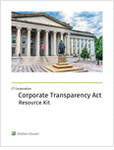One of the more hotly disputed issues regarding the use of predictive coding is whether parties may use keyword searches to remove nonresponsive documents from a collection of potentially relevant information. Courts have so far provided mixed guidance on this issue, leaving litigants guessing whether their choice of combining keyword and predictive coding search methodologies—if challenged by an adversary—would receive judicial approval. Nevertheless, a new ruling from the Rio Tinto v. Vale (S.D.N.Y. 2015) litigation confirms that parties may blend these search methods to achieve reasonable and proportional productions of highly relevant information.
Mixed Signals on the Use of Keywords with Predictive Coding
By way of background, the courts until recently had sent litigants mixed signals on the use of keywords in connection with predictive coding. On the one hand, multiple courts—most notably the court in In re Biomet (N.D. Ind. 2013)—have approved this holistic approach toward document productions, finding that it satisfied a party’s discovery obligations under the Federal Rules of Civil Procedure.
This content has been archived. It is available through our partners, LexisNexis® and Bloomberg Law.
To view this content, please continue to their sites.
Not a Lexis Subscriber?
Subscribe Now
Not a Bloomberg Law Subscriber?
Subscribe Now
LexisNexis® and Bloomberg Law are third party online distributors of the broad collection of current and archived versions of ALM's legal news publications. LexisNexis® and Bloomberg Law customers are able to access and use ALM's content, including content from the National Law Journal, The American Lawyer, Legaltech News, The New York Law Journal, and Corporate Counsel, as well as other sources of legal information.
For questions call 1-877-256-2472 or contact us at [email protected]




